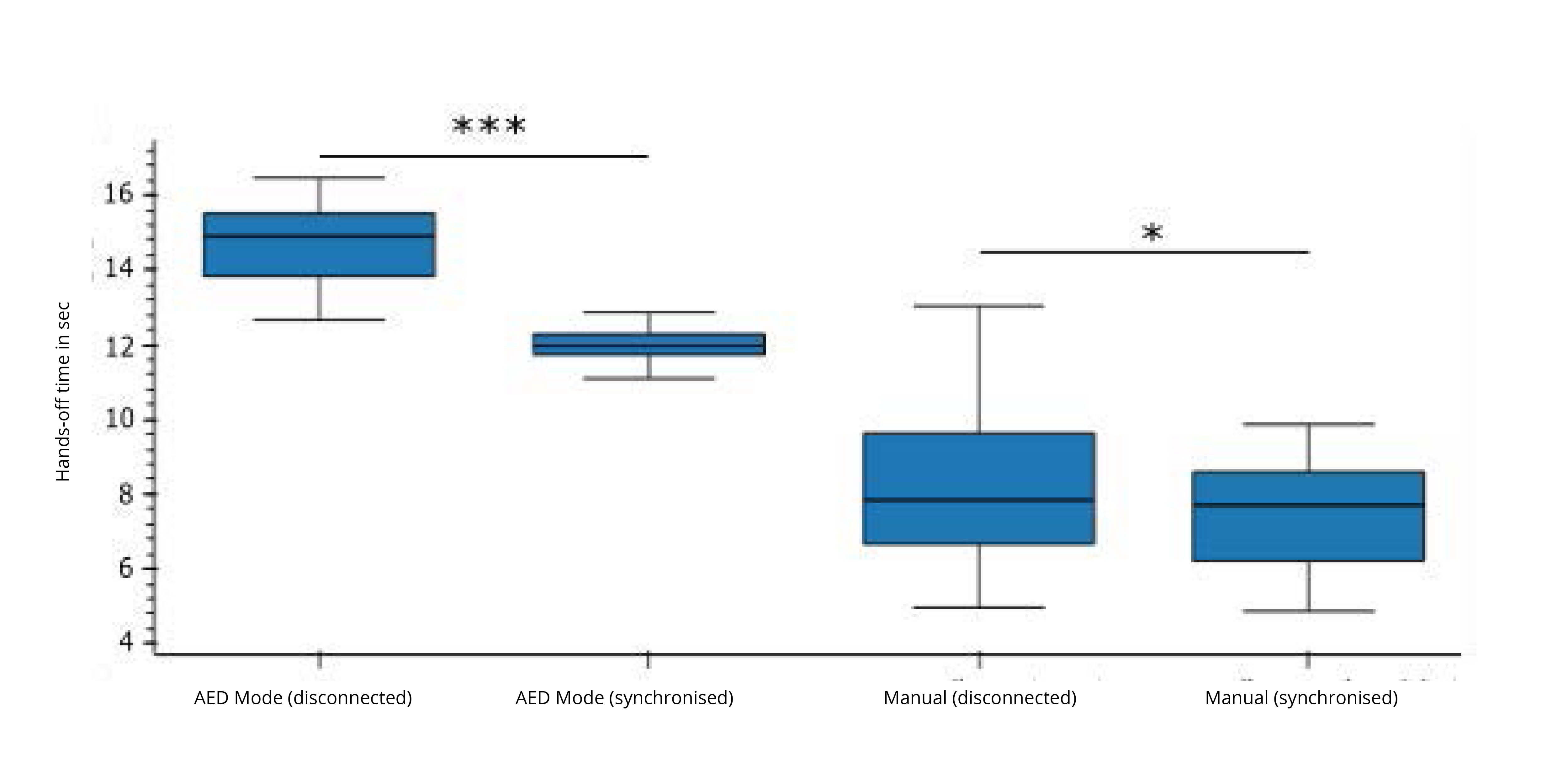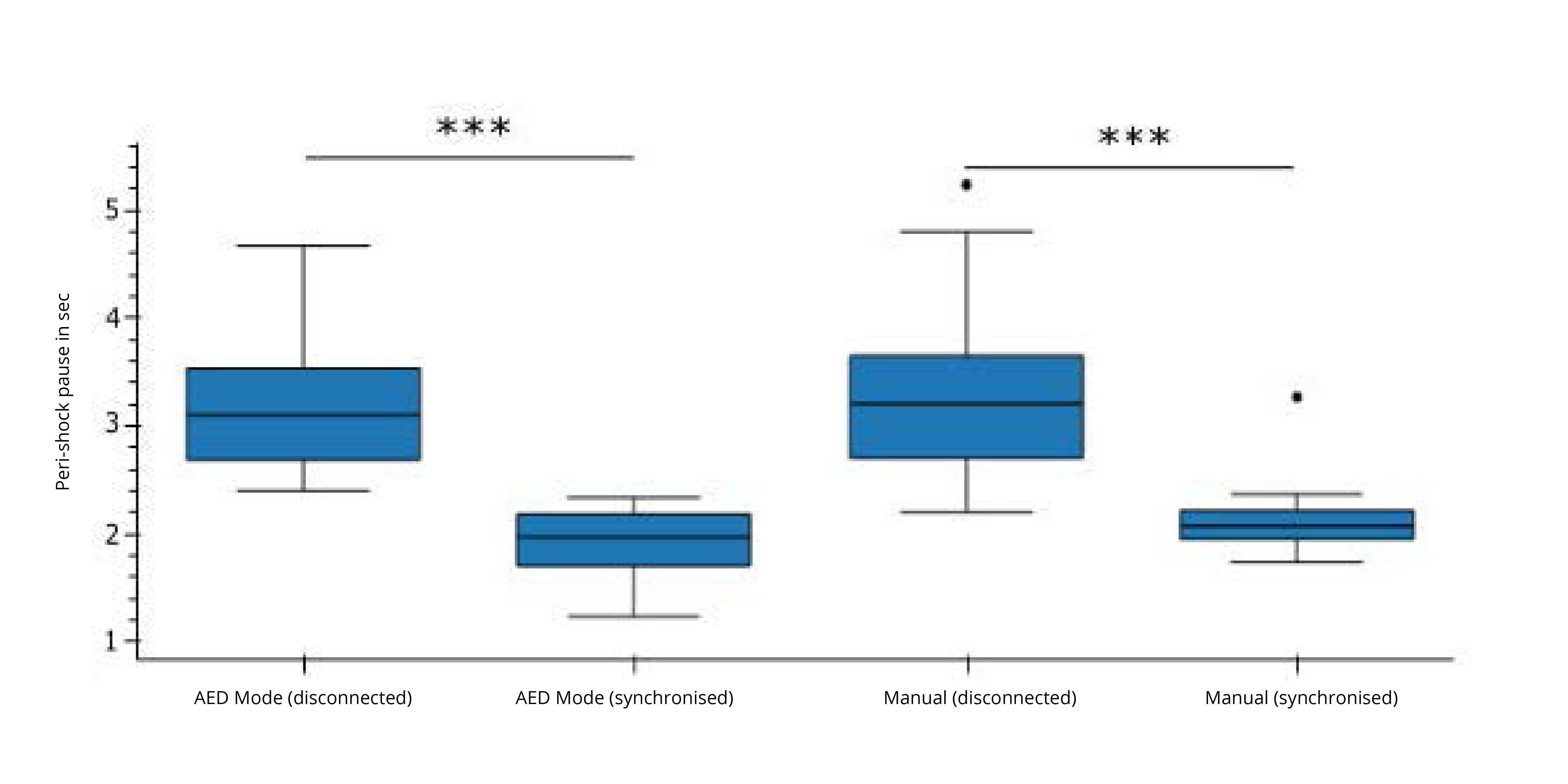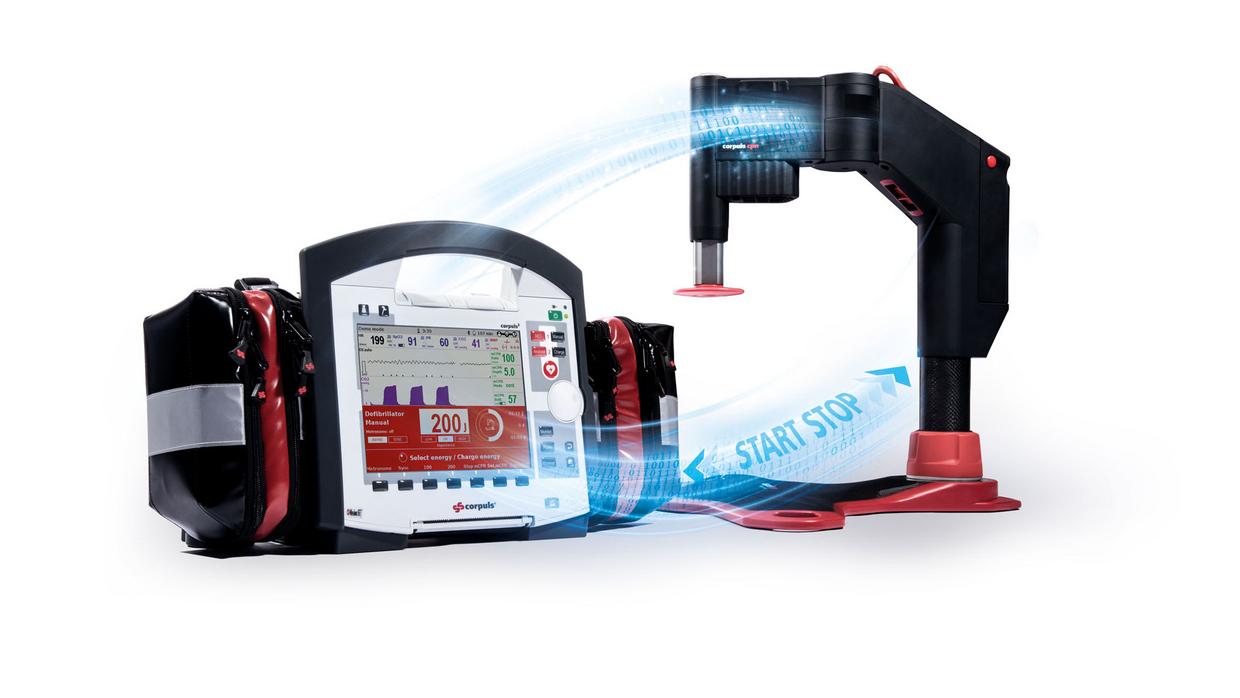The ERC guidelines recommend the shortest possible compression interruptions during cardiopulmonary resuscitation. Before and after the shock delivery, chest compressions should be interrupted for a maximum of 10 seconds. A peri-shock pause (the compression break before and after defibrillation) of a maximum of 10 seconds has been scientifically proven to be associated with a higher survival rate (Cheskes et al. 2014; Sell et al. 2010). According to the ERC guidelines, the entire manual defibrillation process should be possible with a compression break of less than 5 seconds (Monsieurs et al. 2015). When using the corpuls3 in combination with the corpuls cpr in an in-house study, these recommendations could be noticeably undercut. With the synchronisation of the corpuls3 and the corpuls cpr, this endeavour could be further increased. With synchronized device operation, the hands-off time was reduced by 16.08%.

The reduction in the compression pause is particularly evident during the perishock pause. On average, the perishock pause in synchronized mode of 2.00 ± 0.32 s is 38.23% shorter than the peri-shock pause in disconnected mode of 3.24 ± 0.71 s. This saving can be a valuable gain in time with the desired break being a maximum of 5 seconds.

References
Cheskes, Sheldon; Schmicker, Robert H.; Verbeek, P. Richard; Salcido, David D.; Brown, Siobhan P.; Brooks, Steven et al. (2014): The impact of peri-shock pause on survival from out-of-hospital shockable
cardiac arrest during the Resuscitation Outcomes Consortium PRIMED trial. In: Resuscitation 85, S. 336–342. DOI: 10.1016/j.resuscitation.2013.10.014.
Kleinman, Monica E.; Brennan, Erin E.; Goldberger, Zachary D.; Swor, Robert A.; Terry, Mark; Bobrow, Bentley J. et al. (2015): Part 5. Adult Basic Life Support and Cardiopulmonary Resuscitation Quality.
Circulation. 2015;132[suppl 2]:S414–S435. In: Circulation 132 (18 suppl 2), S. S414-S435. DOI: 10.1161/CIR.0000000000000259.
Monsieurs, Koenraad G.; Nolan, Jerry P.; Bossaert, Leo L.; Greif, Robert; Maconochie, Ian K.; Nikolaou, Nikolaos I. et al. (2015): European Resuscitation Council Guidelines for Resuscitation 2015: Section 1.
Executive summary. Resuscitation 95 (2015) 1–80. In: Resuscitation 95, S. 1–80. DOI: 10.1016/j.resuscitation.2015.07.038.
Nolan, Jerry P.; Soar, Jasmeet; Zideman, David A.; Biarent, Dominique; Bossaert, Leo L.; Deakin, Charles D. et al. (2010): European Resuscitation Council Guidelines for Resuscitation 2010. Section 1.
Executive Summary. In: Resuscitation 81 (10), S. 1219–1276. DOI: 10.1016/j.resuscitation.2010.08.021.
Perkins, Gavin D.; Olasveengen, Theresa M.; Maconochie, Ian; Soar, Jasmeet; Wyllie, Jonathan; Lockey, Robert Greif Andrew et al. (2017): ERC 2017 Guidelines Update. In: Resuscitation. DOI: 10.1016/j.
resuscitation.2017.12.007.
Sell, Rebecca E.; Sarno, Renee; Lawrence, Brenna; Castillo, Edward M.; Fisher, Roger; Brainard, Criss et al. (2010): Minimizing pre- and post-defibrillation pauses increases the likelihood of return of spontaneous
circulation (ROSC). In: Resuscitation 81 (7), S. 822–825. DOI: 10.1016/j.resuscitation.2010.03.013.
.jpg?width=342&height=509&name=OrtusAcademy(YELLOWGradient).jpg)




Leave Comment